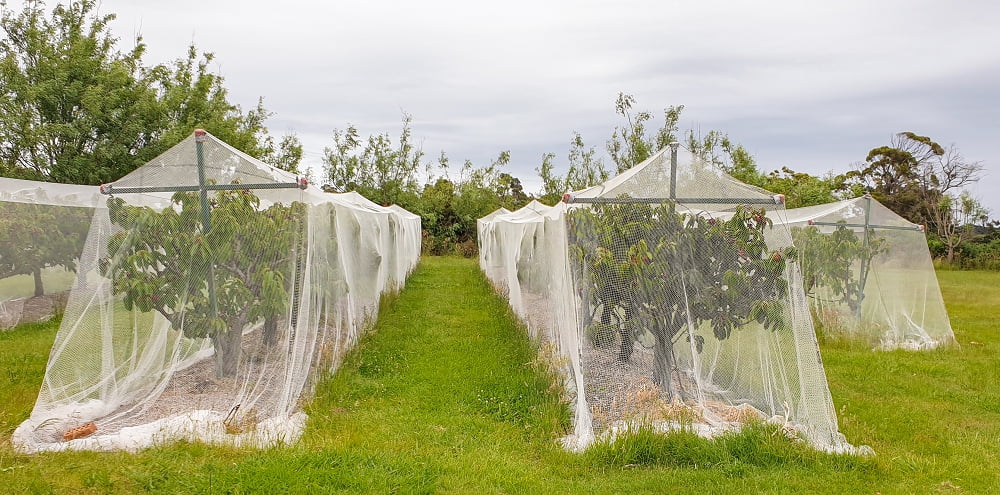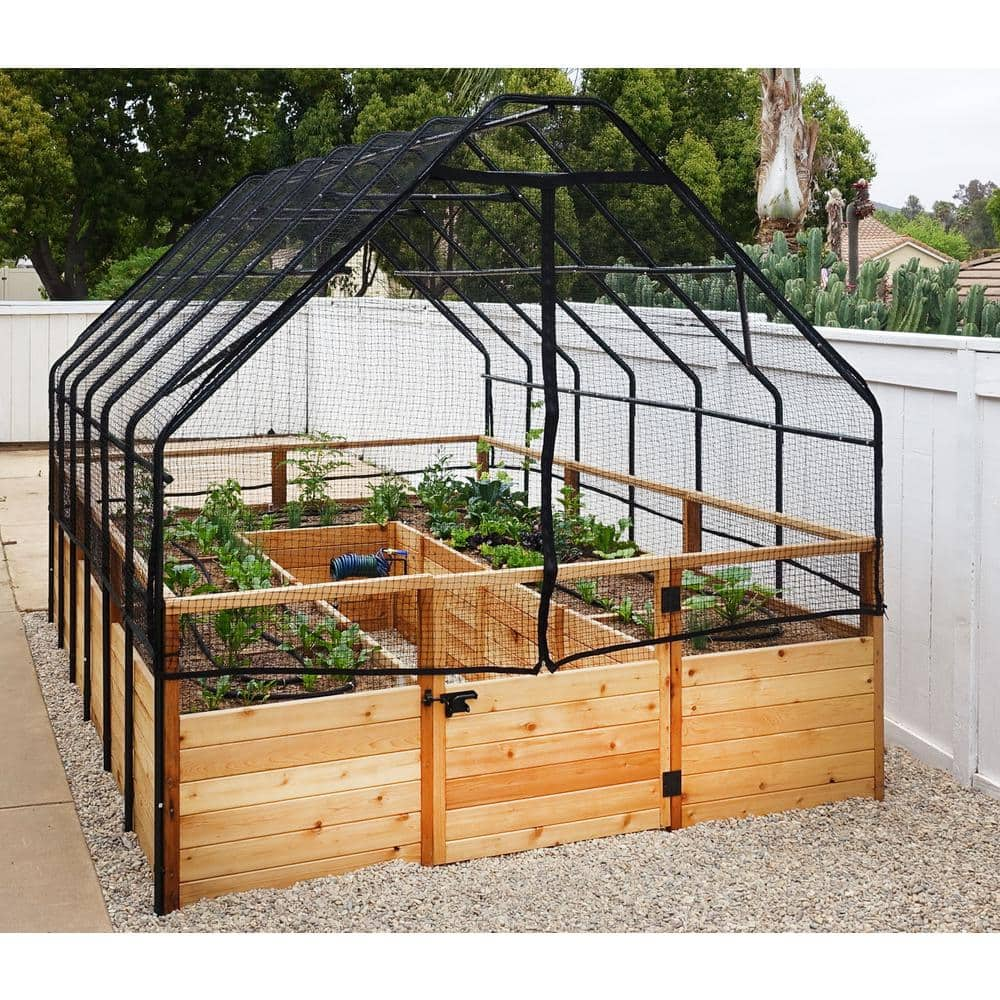How To Protect Your Garden With Netting
Title: How to Protect Your Garden with Netting
Introduction:
Gardening is a rewarding hobby, but it can also be frustrating when pests and animals damage your plants. Netting is a simple and effective way to protect your garden from a variety of pests, including birds, rabbits, deer, and insects. Netting can also be used to protect your garden from frost and wind damage.
In this blog post, I will discuss the different types of netting available, how to choose the right netting for your garden, and how to install netting properly. I will also provide some tips on how to maintain your netting so that it will last for many years.
Main Content:
There are two main types of netting used for gardening: insect netting and bird netting. Insect netting is made of a fine mesh that will keep insects out of your plants. Bird netting is made of a larger mesh that will allow insects to pass through, but will keep birds out.
When choosing netting for your garden, you will need to consider the size of the mesh, the color of the netting, and the durability of the netting. The mesh size will determine which pests the netting will protect against. A finer mesh will keep out smaller pests, such as insects and rodents. A larger mesh will allow larger pests, such as birds and deer, to pass through.
The color of the netting can also be important. If you are using netting to protect your plants from birds, you will want to choose a netting that is a bright color, such as red or blue. Birds are less likely to eat fruit or vegetables that are surrounded by a bright color.
The durability of the netting is also important. You will want to choose a netting that is made of a strong material, such as polypropylene or polyethylene. These materials are resistant to tearing and UV rays.
Once you have chosen the right netting, you will need to install it properly. The netting should be secured to the ground with stakes or weights. It is also a good idea to tie the netting to stakes or posts at regular intervals to prevent it from flapping in the wind.
Tips for Maintaining Netting:
To keep your netting in good condition, you should inspect it regularly for damage. If the netting is torn, you should repair it immediately. You should also wash the netting periodically to remove dirt and debris.
Netting can be a valuable asset for any gardener. By following the tips in this blog post, you can choose the right netting for your garden and install it properly. With a little care and maintenance, your netting will last for many years and help you to protect your plants from pests and damage.
Conclusion:
Netting is a simple and effective way to protect your garden from a variety of pests and damage. By following the tips in this blog post, you can choose the right netting for your garden and install it properly. With a little care and maintenance, your netting will last for many years and help you to enjoy a bountiful harvest.
Garden netting is a great way to protect your plants from pests, animals, and the elements. It can be used to create a barrier around your garden beds, to cover your plants during the winter, or to keep pests out of your greenhouse.
There are many different types of garden netting available, so you can choose the right one for your needs. Some factors to consider include the size of your garden, the type of pests you are trying to protect against, and the climate in your area.
If you are interested in learning more about garden netting, [visit Home Gardening]. Home Gardening is a comprehensive resource that provides information on all aspects of garden netting, including different types, how to choose the right one, and how to install it.
FAQ of garden netting
- What is garden netting?
Garden netting is a lightweight, mesh fabric that is used to protect plants from pests, animals, and the elements. It is typically made from polyethylene or polypropylene and is available in a variety of sizes, colors, and mesh sizes.
- What are the benefits of using garden netting?
Garden netting offers a number of benefits, including:
* Protection from pests: Garden netting can help to protect your plants from birds, squirrels, rabbits, deer, and other animals that may damage or eat them.
* Protection from the elements: Garden netting can help to protect your plants from wind, rain, and snow. This can be especially helpful in areas with harsh weather conditions.
* Shade: Garden netting can also be used to provide shade for your plants, which can help to protect them from heat stress and sun damage.
* Containment: Garden netting can also be used to contain livestock or other animals in your garden.
- What are the different types of garden netting?
There are several different types of garden netting available, each with its own specific purpose. Some of the most common types include:
* Bird netting: This type of netting is designed to keep birds out of your garden. It is typically made from a fine mesh that birds cannot see through.
* Rabbit netting: This type of netting is designed to keep rabbits out of your garden. It is typically made from a stronger mesh than bird netting.
* Deer netting: This type of netting is designed to keep deer out of your garden. It is typically made from a very strong mesh.
* Wind netting: This type of netting is designed to protect your plants from wind damage. It is typically made from a thicker mesh than other types of garden netting.
* Shade netting: This type of netting is designed to provide shade for your plants. It is typically made from a loose mesh that allows sunlight to pass through.
- How do I install garden netting?
The installation of garden netting will vary depending on the type of netting you are using and the size of your garden. However, some general tips include:
* Start by measuring the area you want to cover with netting.
* Cut the netting to size.
* Attach the netting to stakes or posts around the perimeter of the area you want to protect.
* Make sure the netting is taut and secure.
- How do I care for garden netting?
Garden netting is relatively low-maintenance. However, it is important to inspect it regularly for any damage. If the netting is damaged, it should be repaired or replaced immediately. You should also wash the netting occasionally to remove dirt and debris.
Image of garden netting
- Green garden netting covering a vegetable garden. This netting is used to protect plants from pests and birds.
- White garden netting covering a strawberry patch. This netting is used to keep birds from eating the strawberries.

- Black garden netting covering a row of tomatoes. This netting is used to keep insects from damaging the tomatoes.

- Mesh garden netting covering a flower bed. This netting is used to keep small animals from digging up the flowers.

- Bird netting covering a fruit tree. This netting is used to keep birds from eating the fruit.

- Insect netting covering a vegetable garden. This netting is used to keep insects from damaging the vegetables.

- Solar garden netting covering a greenhouse. This netting allows sunlight to enter the greenhouse while keeping out heat.

- UV-resistant garden netting covering a vegetable garden. This netting is designed to withstand the sun's ultraviolet rays.
- Waterproof garden netting covering a flower bed. This netting is designed to protect the flowers from rain and snow.

- Reusable garden netting that can be folded up and stored when not in use. This netting is a more sustainable option than disposable netting.



Post a Comment for "How To Protect Your Garden With Netting"